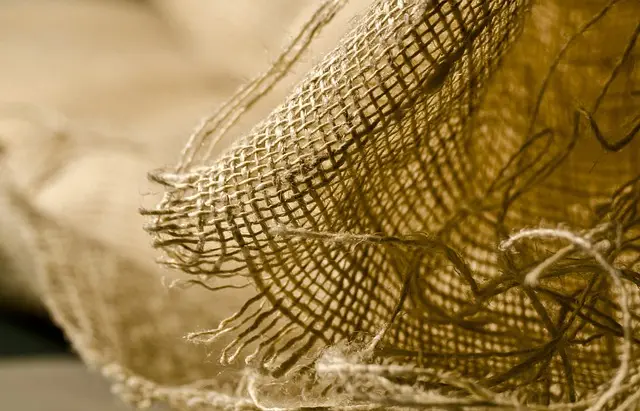Kratom and Kava Kava are natural alternatives that have been explored for their potential to alleviate muscle soreness, often experienced by those engaging in physical activities or recovering from injuries. Kratom, from the Mitragyna speciosa tree, offers pain relief through its active alkaloids, mitragynine and 7-hydroxymitragynine, which may interact with opioid receptors. It can provide a stimulating effect that may aid in maintaining energy levels during recovery, making it a consideration for those who need to stay active. Kava Kava, from the Pacific Islands, contains kavalactones that potentially modulate neurotransmitter activity for muscle relaxation and stress reduction. Unlike Kratom's energizing properties, Kava Kava provides a sedative effect ideal for deep muscle relaxation without stimulant side effects. Both have unique mechanisms of action and offer different therapeutic benefits; users should choose based on their specific needs, adhering to safe dosage guidelines, individual sensitivities, and local regulations. For those considering these options for post-exercise recovery, understanding the distinct effects and safety profiles is crucial. Kratom stands out with strong pain-relieving properties, while Kava Kava is noted for its muscle relaxation and mood benefits. The comparison of Kratom versus Kava Kava as natural remedies for managing muscle soreness underscores their cultural significance and potential role in a holistic approach to recovery.
Muscle soreness can be a persistent challenge for both athletes and casual gym-goers alike. When seeking natural remedies, the debate between kratom and kava kava as relief strategies is particularly noteworthy. This article delves into the efficacy of these ancient herbal treatments in the context of post-workout recovery. We’ll explore their individual roles in alleviating muscle pain, comparing kratom’s alkaloid profile with kava kava’s unique kavalactones to understand which might be more effective for your specific needs. Join us as we dissect the science behind these natural supplements and guide you through making an informed choice between Kratom vs Kava Kava for muscle soreness relief.
- Exploring Muscle Soreness Relief: The Battle Between Kratom and Kava Kava
- Understanding Kratom's Role in Alleviating Post-Workout Aches
- Kava Kava: An Ancient Remedy for Muscle Soreness
Exploring Muscle Soreness Relief: The Battle Between Kratom and Kava Kava

Muscle soreness, a common experience for individuals engaging in physical activities or those recovering from injuries, often necessitates effective relief strategies. Among the natural alternatives, Kratom and Kava Kava have garnered attention for their potential muscle soothing properties. Kratom, derived from the Mitragyna speciosa tree, has been traditionally used in Southeast Asia for its various health benefits. Its alkaloids, particularly mitragynine and 7-hydroxymitragynine, are believed to interact with opioid receptors in the brain, providing analgesic effects that may aid in muscle soreness relief. Kava Kava, on the other hand, is a pine-like shrub hailing from the Pacific Islands, known for its calming and anesthetic properties due to its kavalactones content. These compounds have been shown to modulate neurotransmitter activity, potentially reducing inflammation and pain associated with muscle soreness.
Comparing Kratom vs Kava Kava for muscle soreness relief involves understanding their distinct mechanisms of action. Kratom is often reported to offer a more stimulating effect at lower doses, which can enhance energy levels and improve mood, alongside its analgesic properties. This dual benefit may be particularly advantageous during recovery periods when physical activity is still encouraged. In contrast, Kava Kava offers a more pronounced sedative effect, which can be beneficial for muscle relaxation and stress relief. Its lack of stimulant properties might make it a preferred choice for individuals seeking to manage soreness without the energizing influence of Kratom. Both substances have been subjects of ongoing research to elucidate their full potential in pain management; however, it is crucial to approach their use with caution, adhering to safe dosage guidelines and considering individual sensitivities and local regulations regarding their consumption.
Understanding Kratom's Role in Alleviating Post-Workout Aches

When engaging in intense physical activity, muscle soreness is a common occurrence that can hinder recovery and affect performance. Kratom, a tropical tree native to Southeast Asia, has garnered attention for its potential role in alleviating post-workout aches. The active compounds found in kratom leaves, known as mitragynine and 7-hydroxymitragynine, interact with the body’s opioid receptors, which may help to manage pain. This interaction is distinct from that of kava kava, another natural supplement traditionally used for its relaxing properties. While both substances are popular for their therapeutic effects, kratom is particularly noted for its analgesic qualities, making it a compelling alternative or adjunct to kava kava in addressing muscle soreness following exercise. It’s important to note the nuanced differences between these two supplements; whereas kava kava primarily promotes relaxation and mood enhancement, kratom’s effects are more aligned with pain relief and energy modulation. Users interested in incorporating kratom into their post-workout recovery routine should consider the specific strains, as some are more potent for pain relief than others. Additionally, the dosage and frequency of use can significantly influence the effectiveness of kratom in alleviating muscle soreness. As with any supplement, it is crucial to adhere to recommended guidelines and consult with a healthcare provider before integrating kratom into your regimen to ensure safety and efficacy.
Kava Kava: An Ancient Remedy for Muscle Soreness

Kava kava, an ancient Polynesian remedy, has long been recognized for its analgesic properties, offering a natural alternative to modern pain relievers. Traditionally prepared by grinding the root of the Piper methysticum plant into a drink, kava kava has been used in cultural ceremonies and for medicinal purposes due to its potential muscle relaxant and anesthetic effects. Its efficacy in alleviating muscle soreness is attributed to its active compounds known as kavalactones, which are thought to interact with the central nervous system to produce a soothing effect. While the mechanisms behind kava kava’s pain-relieving qualities are still being researched, its traditional use for pain relief is well-documented in historical practices, making it a time-tested option for those seeking natural muscle soreness relief.
In comparison to kratom, another herbal supplement that has gained popularity for its potential pain-relieving and mood-enhancing effects, kava kava presents a distinct option. Kratom, derived from the leaves of Mitragyna speciosa, has been subject to regulatory scrutiny in various regions due to its psychoactive properties. Both substances are believed to interact with opioid receptors in the brain, but their different alkaloid profiles contribute to unique therapeutic effects. Kava kava’s gentle modulation of GABA activity is thought to be particularly beneficial for muscle relaxation without the euphoric or sedative side effects that some individuals may experience with kratom. As such, kava kava serves as a valuable addition to the conversation on natural supplements for managing muscle soreness, offering a traditional and potentially effective approach backed by cultural wisdom passed down through generations.
Muscle soreness, a common occurrence among those who engage in physical activity, can significantly hinder recovery and performance. The exploration of natural remedies for alleviating post-workout discomfort has brought to light the potential benefits of both kratom and kava kava. While kratom has shown promise in various studies for its analgesic effects, kava kava’s traditional use as a muscle relaxant and pain reliever is equally noteworthy. Kratom vs kava kava presents a compelling comparison for those seeking effective relief from muscle soreness. As the evidence suggests, both substances may be valuable in managing post-exercise aches; however, individual responses to these supplements can vary, emphasizing the importance of personal experimentation and professional guidance when incorporating them into a recovery regimen. For those considering natural alternatives to pharmaceuticals for muscle soreness relief, kratom and kava kava are worth exploring within the scope of responsible and informed usage.






